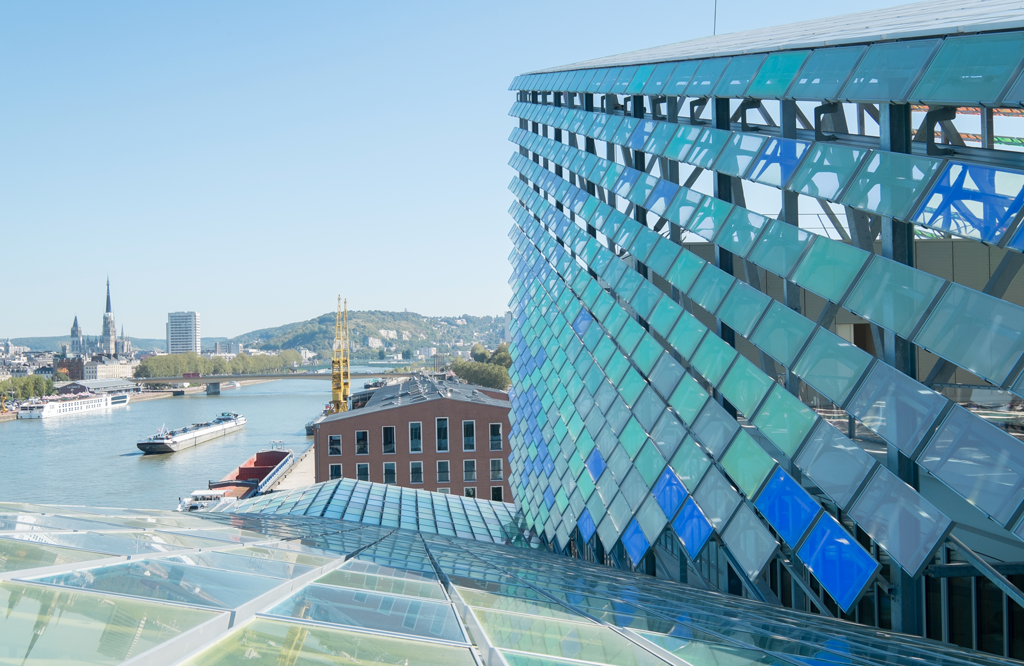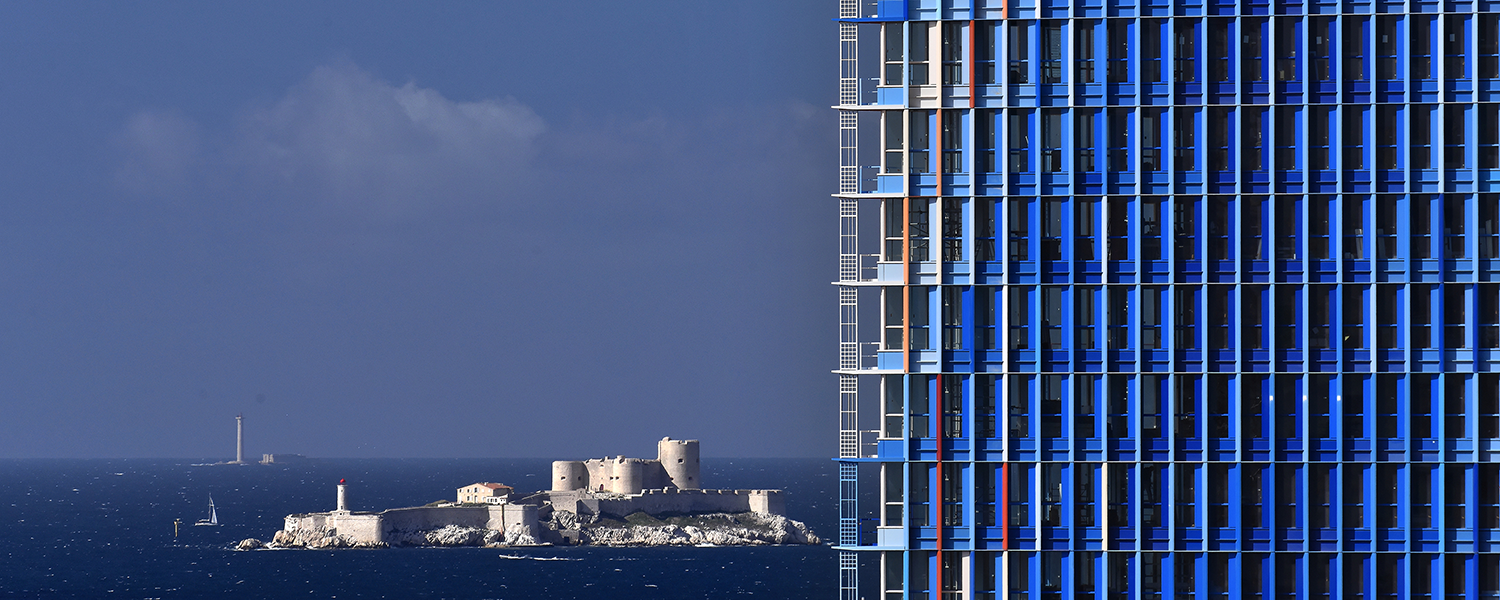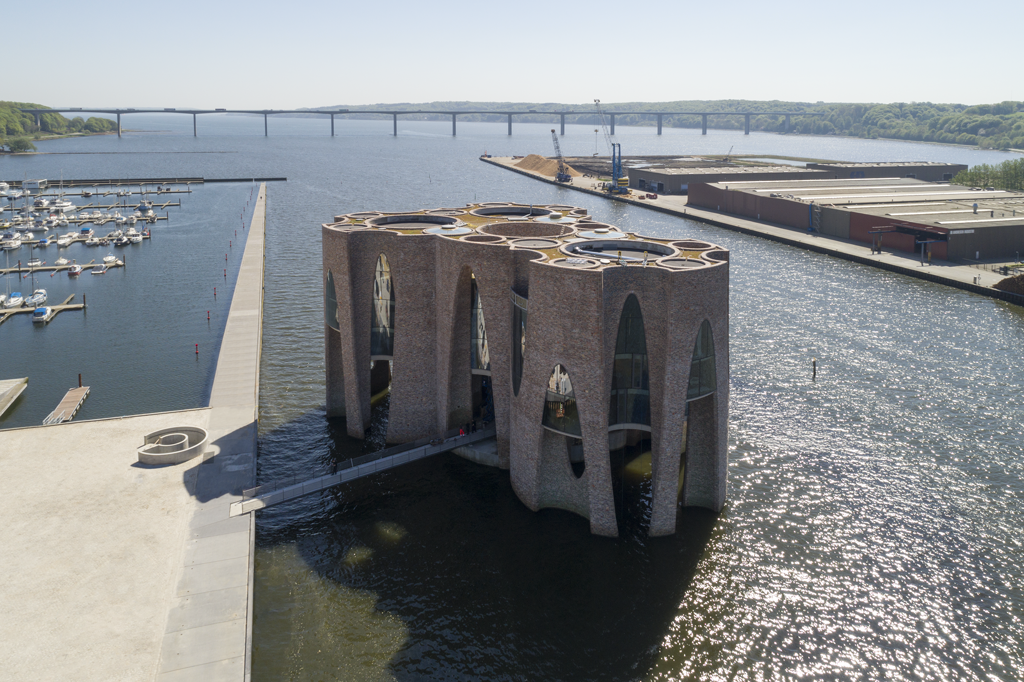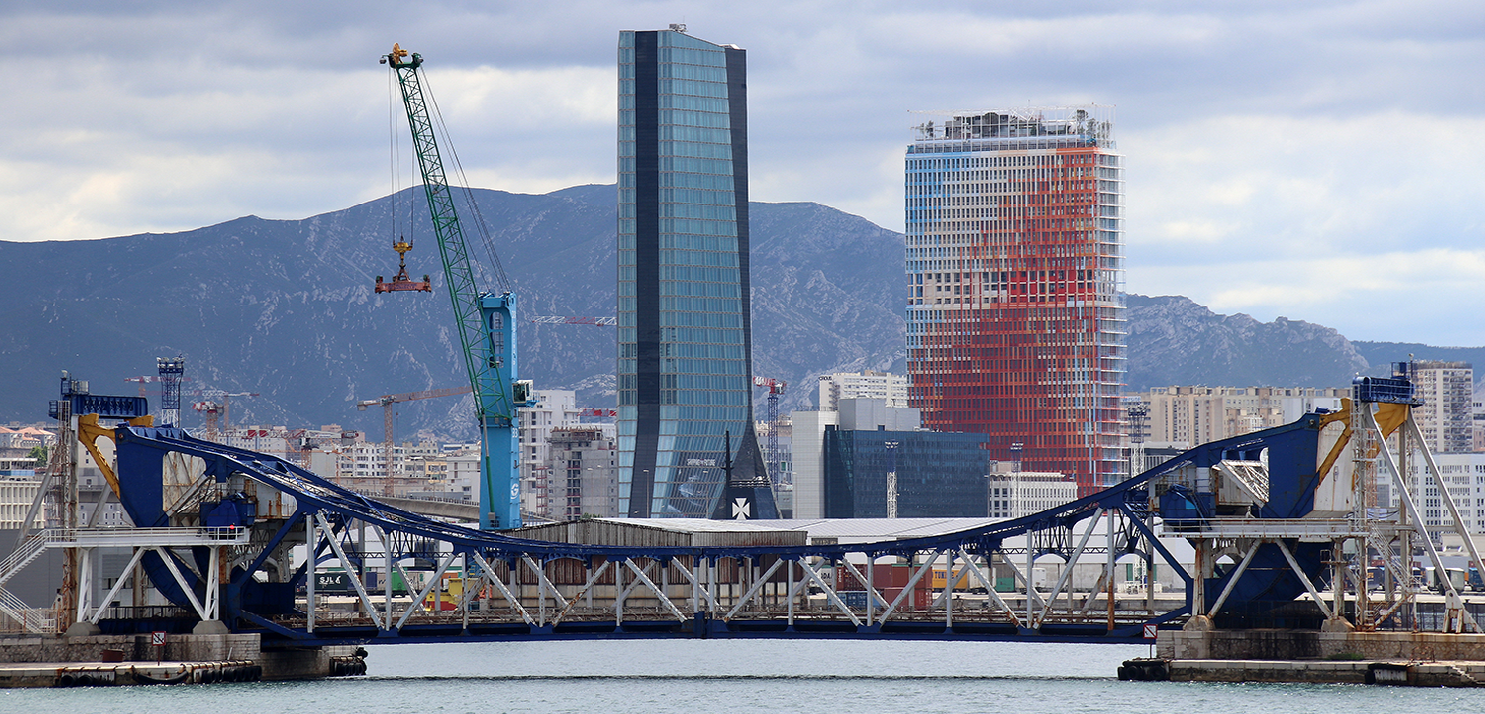Jacques Ferrier in Rouen: architecture on blank canvas
Are old harbours like blank pages left to the imagination of town councillors or even architects? Jacques Ferrier prefers viewing them as “a blank canvas”. With this simple semantic nuance, the architect has designed, for the headquarters of the Métropole Rouen Normandie completed in July 2017, the outline of a committed building.
An article by Jean-Philippe Hugron, published in L’Architecture d’Aujourd’hui 427th issue (October 2018).
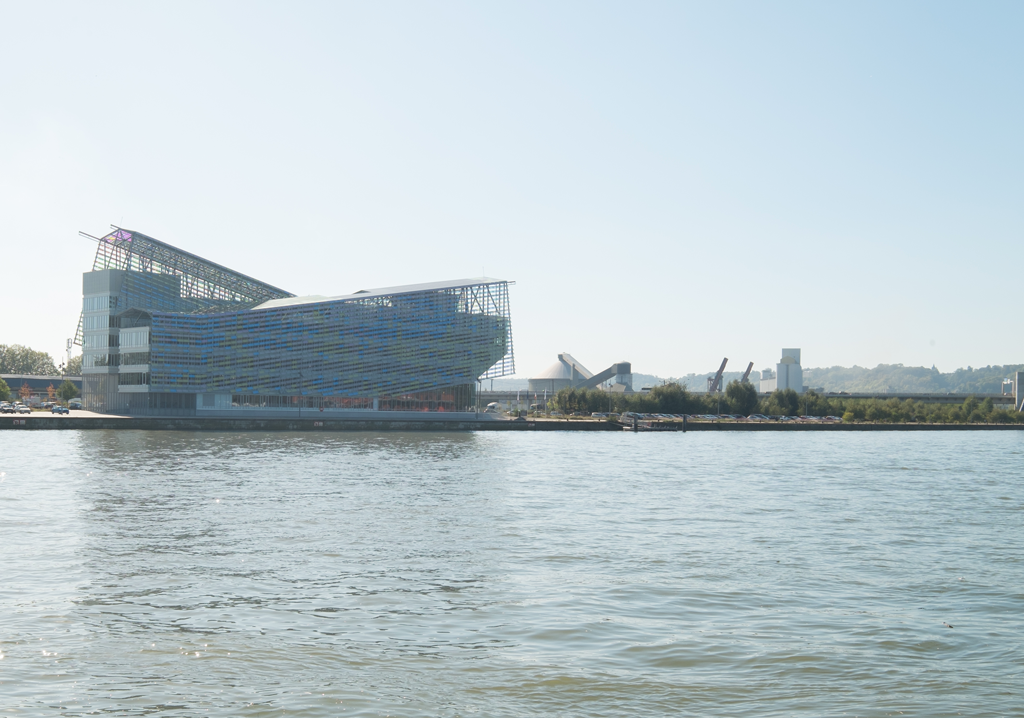
“We stand firm in our resolution to respect the culture of ports. They are places marked by great horizontal lines where warehouses and industrial equipment are positioned at regular intervals. They form a landscape of objects that stand out on the horizon,” states Jacques Ferrier. The French architect has set about drawing “the silhouette of a machine” designed to house the headquarters of the Métropole Rouen Normandie: 8,300 square metres on the South bank of the Seine. In an area of harbour wasteland dominated by two yellow cranes, a vertical lift bridge and sugar silos, the project makes perfect sense. There is even a mimetic feature in the outline, which the architect willingly acknowledges. “We’re in the rhythm of technical objects,” he argues.
The area’s urban plan is also influenced by its harbour past and the proposal for these new offices had to take on the proportions of a plot where formerly a warehouse, the ‘108’, had stood. “Respecting the imprint of the past and reproducing its dimensions forced us to envisage a building too wide for offices,” Ferrier underlines. Indeed, the exercise turned out to be trickier than anticipated and challenged the architect to conceive of certain artifices in order to stick to the initial brief. “In the first instance, we worked on the overall design to create two appended naves which were slid one along the other and then raised symmetrically. It is from that mock-up interplay that the expression of a double building was born,” he adds.
This volumetric element contributes to the spatial richness of the whole. Ferrier takes this opportunity to achieve his goal and create pathways and routes within a project which, on paper, often appears dull and repetitive. This logic allows for more generous freedom of movement. Seating areas are provided in some places, and unexpected views of terraces and patios are arranged to crop up at regular intervals. These experiences enrich the architecture, and Ferrier has further added to the surprises on offer thanks to an ingenious metal structure enveloping the whole building. “It is as elegant as it is rugged,” he says. Above all, it turns into a support for photovoltaic panels and iridescent window panes: “This materiality translates the current trend that sees the alliance between the technical and the sensory.” The effect is, without doubt, pictorial. “I couldn’t give this project anything but an industrial aesthetic,” he warns. “Once the question of the harbour architecture had been integrated into the volumetry of the building, it seemed essential to me to include a cultural dimension.” Rouen evokes the Impressionists as the cathedral does Claude Monet’s paintings. “It is one of the first ‘series’ paintings. One same perspective of the flamboyant façade of the cathedral was reproduced over various canvasses to show how the building could, hour by hour, season by season, change colour. I wanted to find a way to offer a building which itself would also change tint,” the architect explains.
If the reference was easy to find, Ferrier plays with it subtly, to better transform it. “The Impressionists took emotion and painting as their starting point to lead to technique. We, on the contrary, wanted the technical to lead us to the sensory,” he specifies. This means using either dichroic or interference glass. In other words, the building presents, depending on lighting, two different tints. The greyer the sky, the more intense the colours; thus, viewers are constantly filled with wonder.
Jacques Ferrier and his office keep thinking about harbour spaces via another project, the cruise ship terminal in Sète, in the South of France. “Our proposal seeks to give the possibility of rediscovering a port still in use,” emphasises the architect, who also regrets that inner harbours and docks have become entirely protected enclosures, disconnected from towns. And so, through an audacious proposal, which once again borrows from maritime imagery, he attempts to respond to an urban problematic with architecture… on a blank canvas. ■
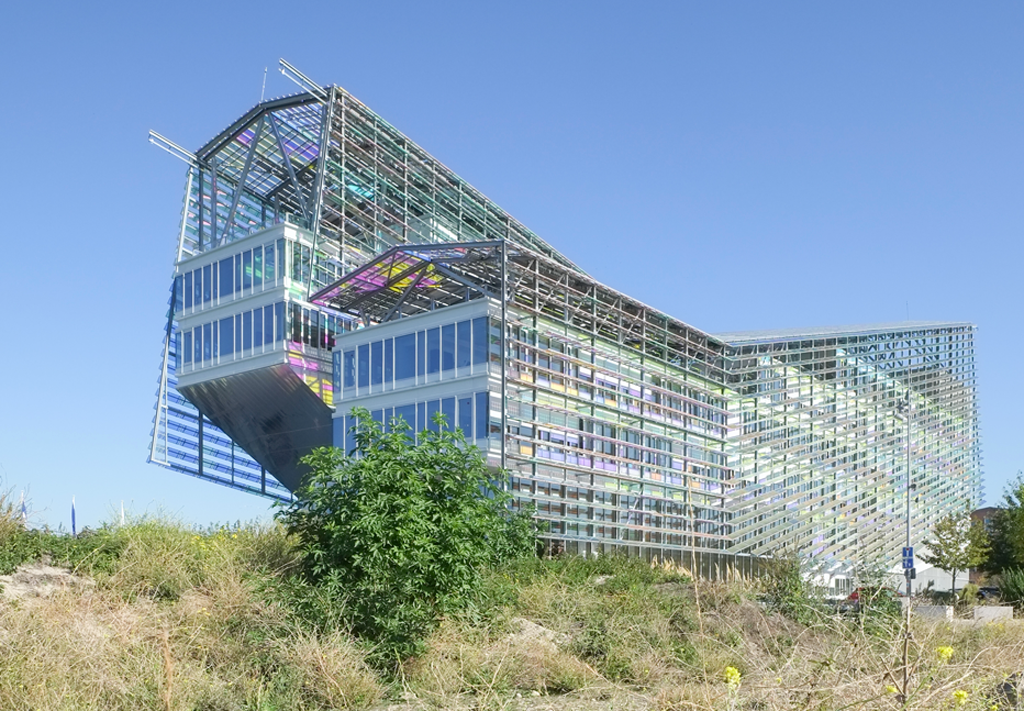
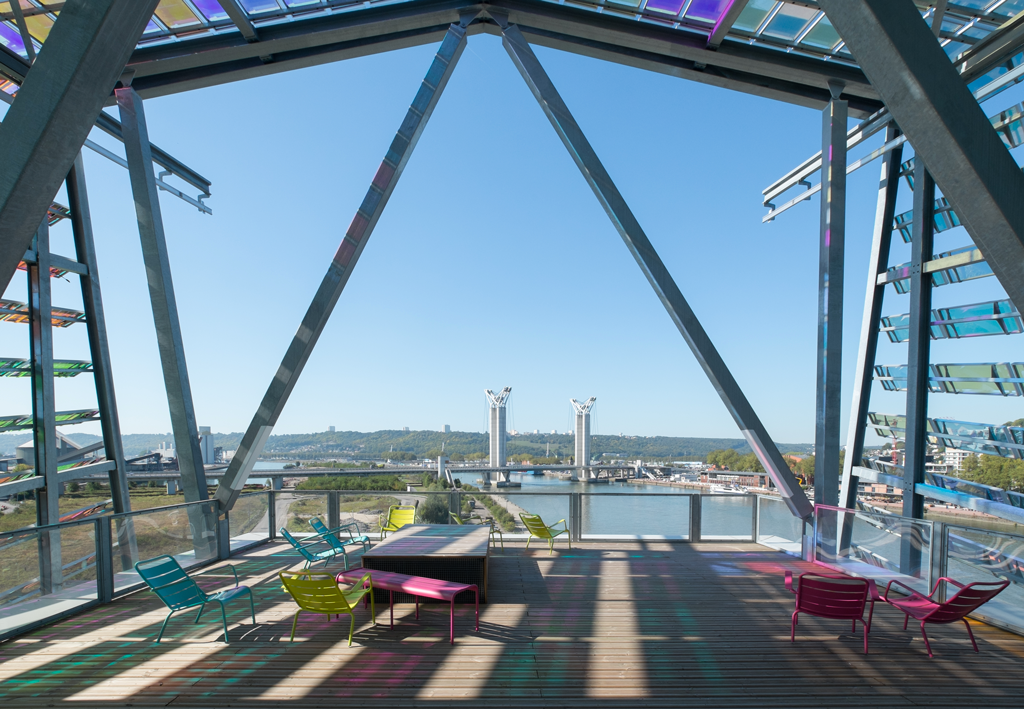
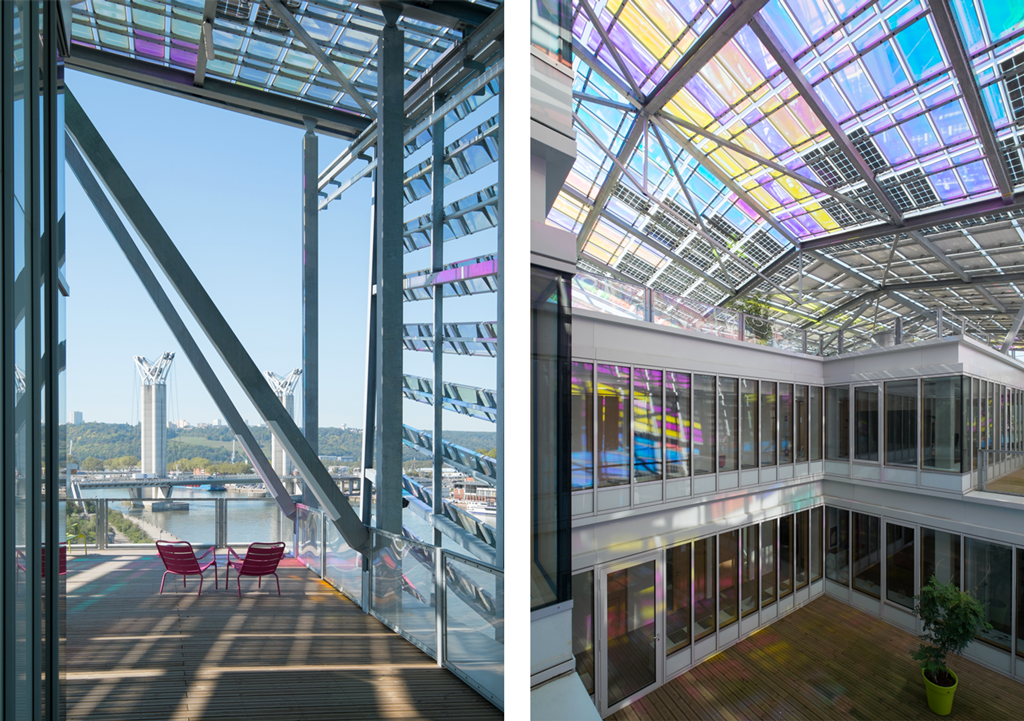
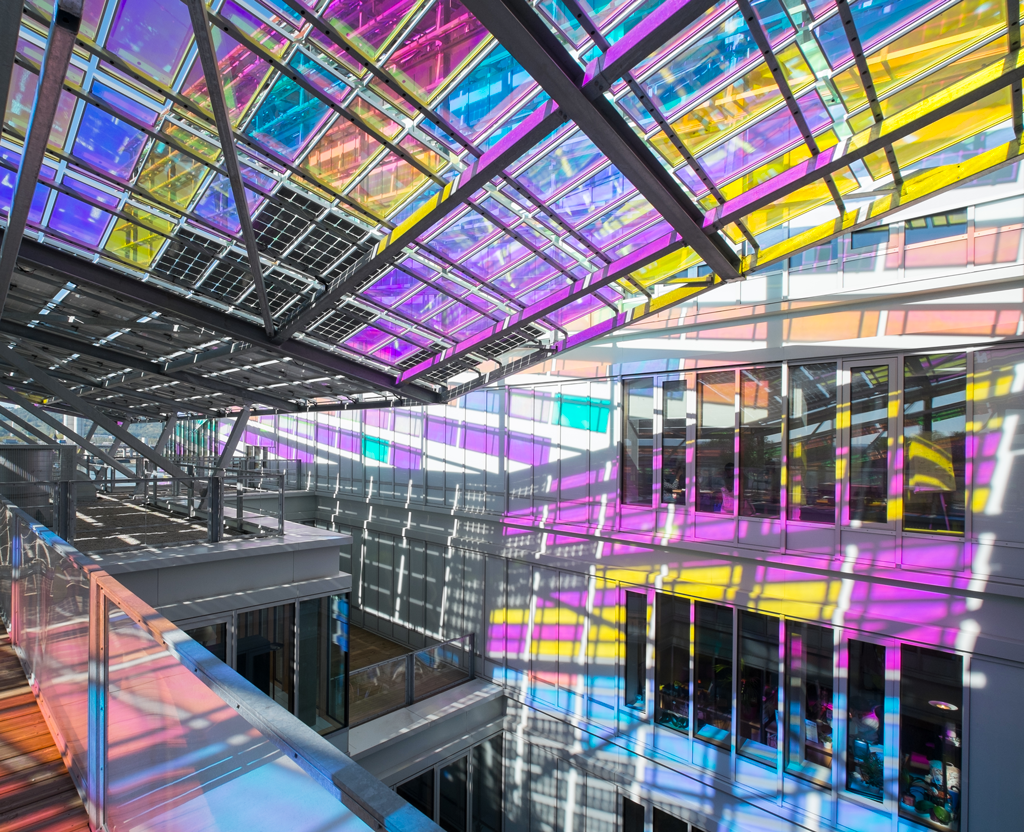
The color variations given by the glass panels diffracting the sunlight and covering the building are directly inspired by Claude Monet’s paintings.
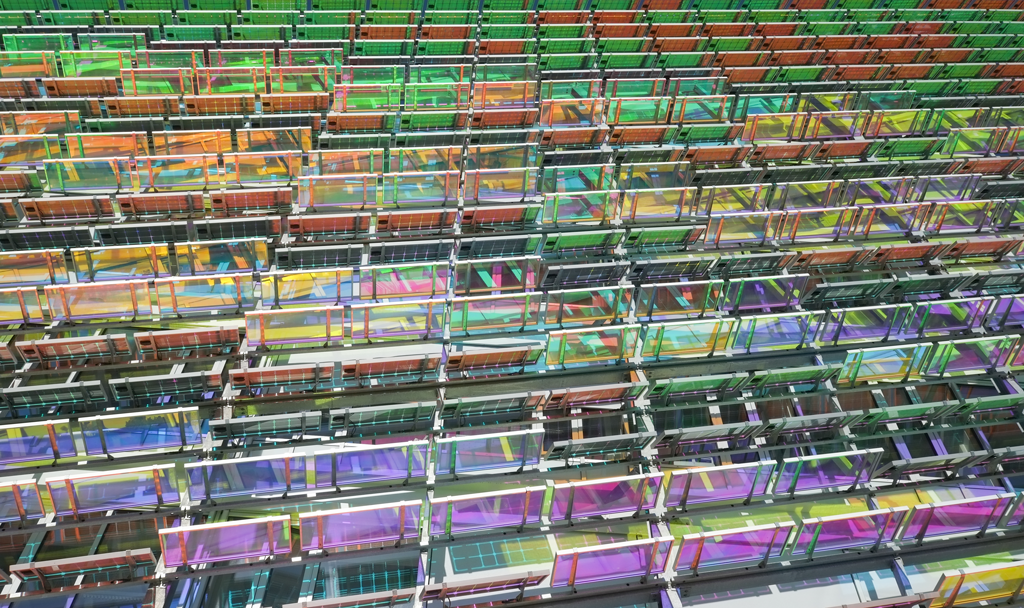
The metal oxide layer covering the façade glass panels offers an iridescent aspect that disappears when seen from the inside in order not to alter the vision of the workspaces.
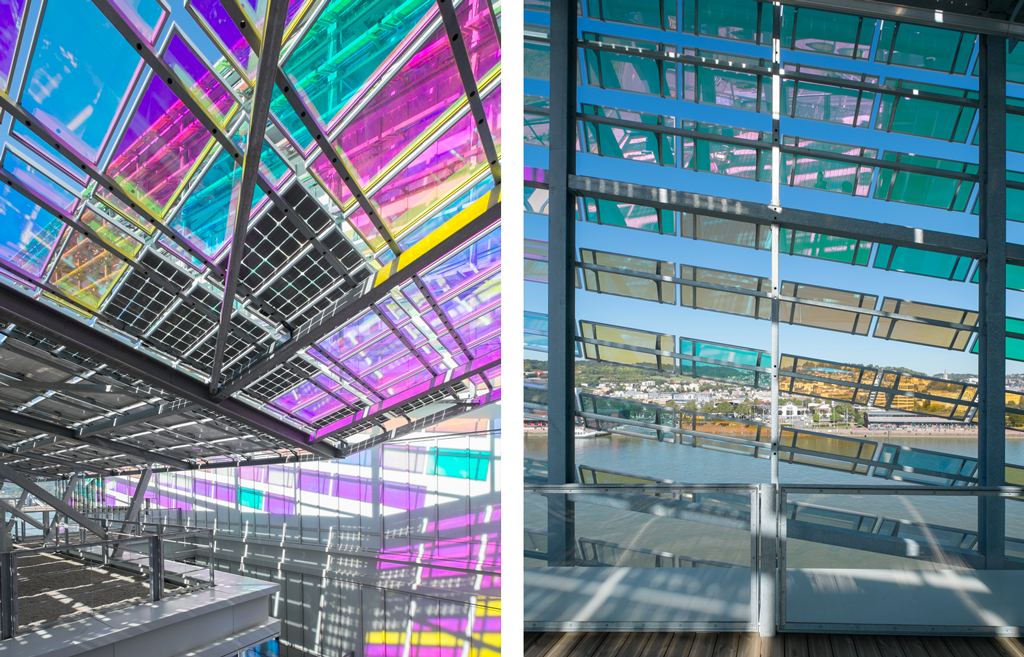
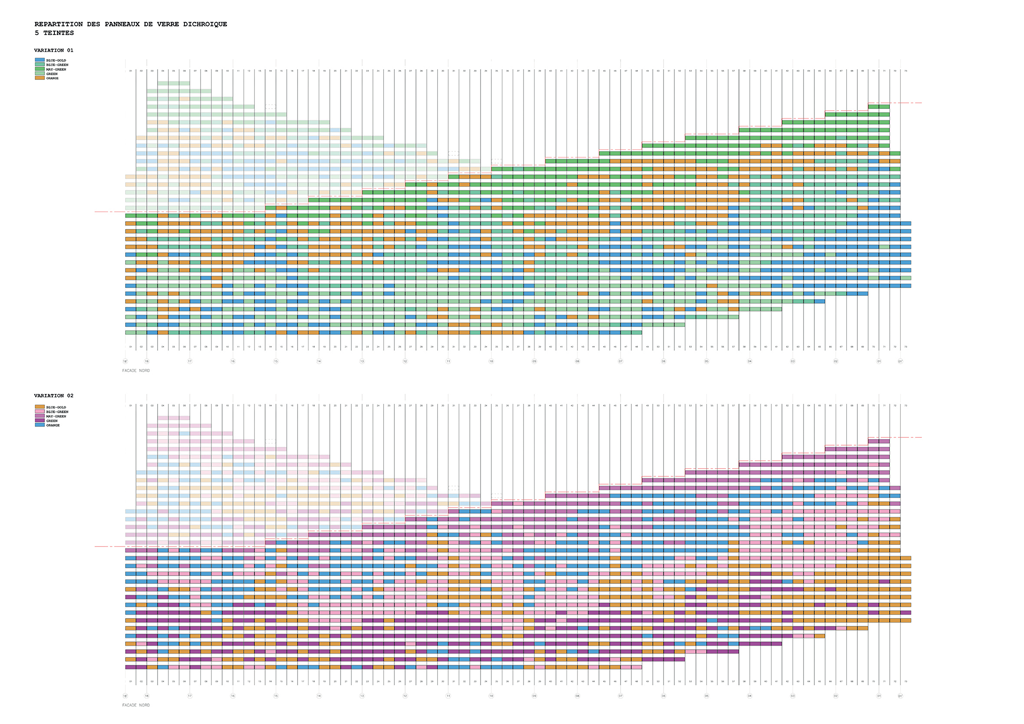
Distribution of the dichroic glass panels. Depending on the angle, each panel has two different tints. On the river Seine side, nearly 5,400 colored glass slides – 12 shades in total – cover the 2,000-sq.metre façades and roof.
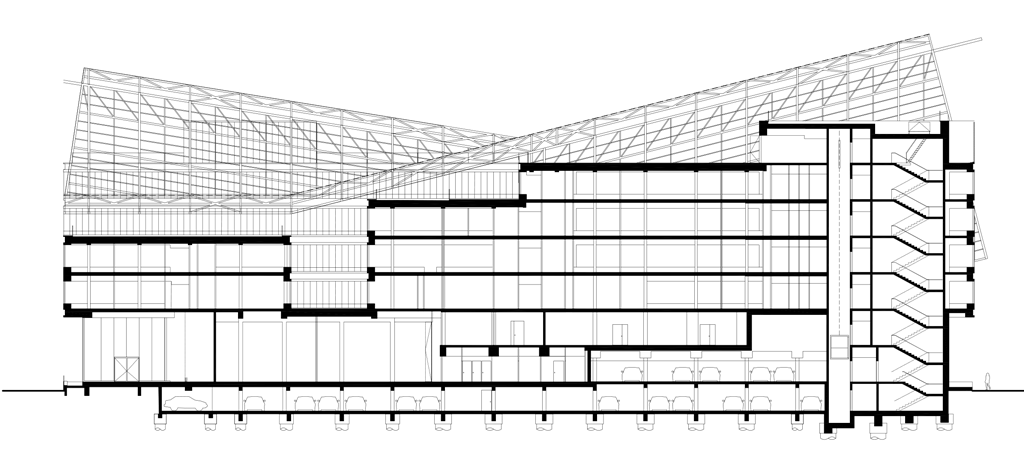
Longitudinal section.
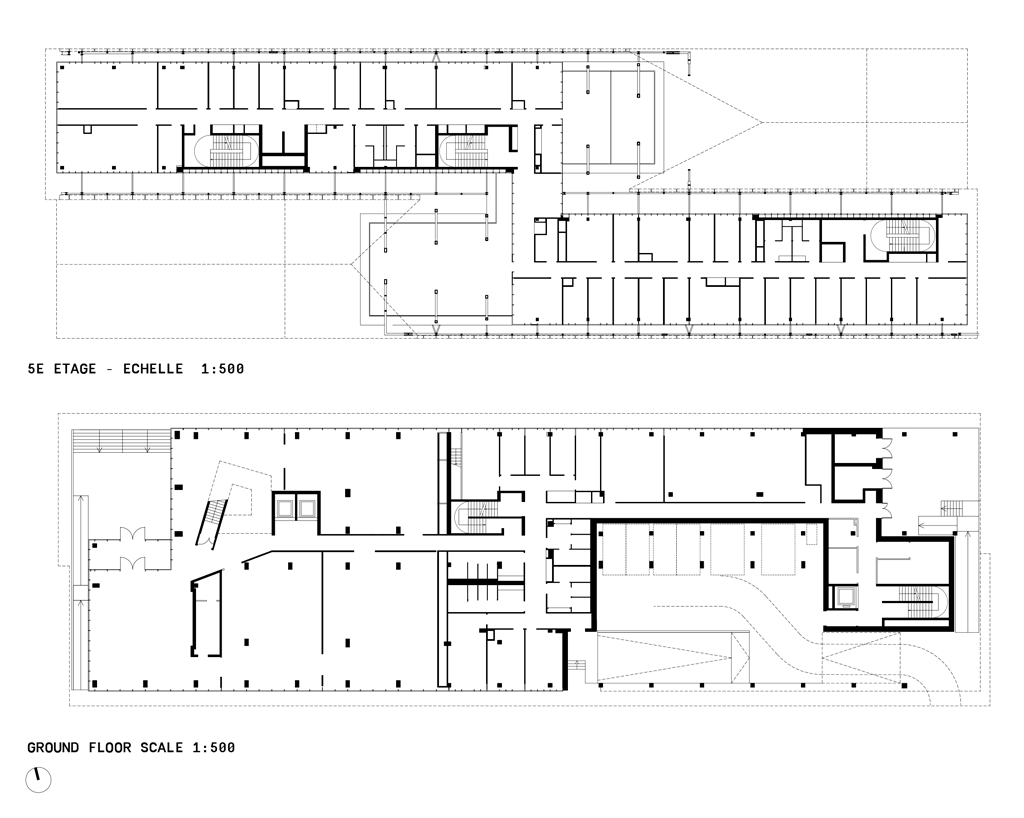
5th floor plan.
Ground floor plan.
—
Métropole Rouen Normandie headquarters
Rouen, France
Client: Métropole Rouen Normandie
Architects: Jacques Ferrier Architecture
Engineering companies: Studio Pauline Marchetti and Sensual City Studio (signage, design and scenography of the hall), C & E engineering (structures), Sogeti (fluids, construction economics), ACV (acoustics)
Programme: Métropole Rouen Normandie headquarters: offices, meeting facilities, reception and exhibition spaces
Area: 8,300 m²
Calendar: Competition: 2013, Completion: 2017
Cost: 25 million euros (excl. tax)
—
L’Architecture d’Aujourd’hui’s 427th issue, dedicated to port architecture, is still available on our online shop.

